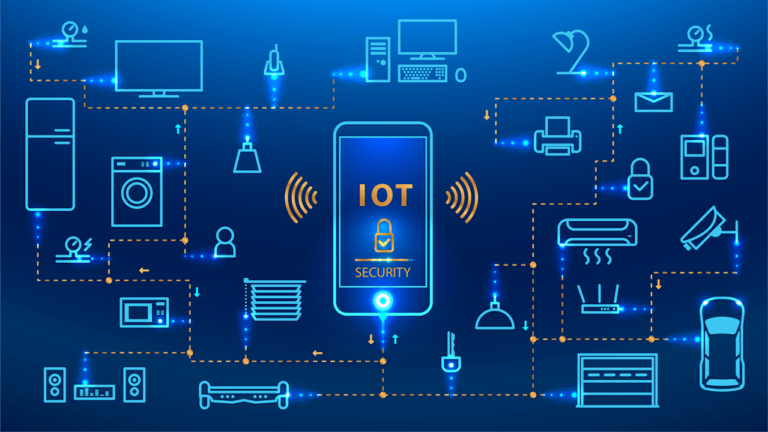
The Internet of Things (IoT) has revolutionized industries and everyday life, connecting billions of devices to enhance efficiency, convenience, and automation. However, this rapid proliferation of connected devices has also introduced significant security challenges. From smart home systems and industrial control networks to healthcare devices and autonomous vehicles, IoT devices present an expanded attack surface for cybercriminals. Organizations must adopt robust security strategies to protect these devices from evolving threats.
Understanding the Unique Security Challenges of IoT
IoT security differs from traditional IT security in several key ways:
- Device Diversity and Volume: IoT ecosystems include a wide range of devices, from smart refrigerators to industrial sensors, each with different security capabilities and vulnerabilities.
- Limited Computational Resources: Many IoT devices have minimal processing power, making it difficult to implement strong encryption or security software.
- Inconsistent Security Standards: Unlike conventional IT infrastructure, IoT lacks universal security standards, leading to varying levels of protection.
- Unpatched and Outdated Firmware: Many IoT devices have long lifespans but receive infrequent updates, making them susceptible to exploits.
- Default Credentials and Weak Authentication: Many IoT devices are deployed with factory-default usernames and passwords, which attackers can easily exploit.
- Network Exposure and Remote Accessibility: IoT devices are often connected to the internet or internal networks, increasing their risk of being targeted by hackers.
The Growing Threat Landscape
Cybercriminals have recognized IoT as a lucrative target, leading to an increase in sophisticated attacks, including:
- Botnets and Distributed Denial-of-Service (DDoS) Attacks: Malware like Mirai has infected IoT devices, leveraging them to launch massive DDoS attacks.
- Ransomware Targeting IoT Devices: Attackers are encrypting IoT device data and demanding ransom for decryption.
- Data Theft and Privacy Breaches: IoT devices collect vast amounts of sensitive data, making them attractive for cyber espionage.
- Supply Chain Attacks: Malicious actors compromise the firmware or software of IoT devices before deployment.
Strategies for Securing IoT Devices
To mitigate these risks, organizations must implement a multi-layered security approach:
1. Device Authentication and Access Control
- Implement strong authentication mechanisms, such as multifactor authentication (MFA) and digital certificates, to prevent unauthorized access.
- Enforce least privilege access policies to limit device communication to only essential services.
2. Secure Software Development Lifecycle (SDLC)
- Ensure security is a core component of the IoT device development lifecycle.
- Regularly update firmware and software to patch vulnerabilities.
- Conduct regular security testing, including penetration testing and code reviews.
3. Network Security and Segmentation
- Use network segmentation to isolate IoT devices from critical systems and sensitive data.
- Employ firewalls, intrusion detection systems (IDS), and virtual private networks (VPNs) to secure network traffic.
- Monitor IoT traffic for anomalies and potential threats using behavioral analytics and AI-driven security tools.
4. Data Encryption and Secure Communication
- Implement end-to-end encryption to protect data in transit and at rest.
- Use secure communication protocols like TLS and MQTT with authentication mechanisms.
5. Supply Chain Security
- Vet suppliers and manufacturers to ensure devices meet security best practices.
- Monitor device firmware for potential supply chain threats.
- Adopt a zero-trust approach when integrating third-party IoT solutions.
6. Automated Security Updates and Patch Management
- Enable automatic updates to ensure IoT devices receive timely security patches.
- Regularly audit devices to identify outdated firmware and replace vulnerable hardware when necessary.
7. User Awareness and Education
- Educate employees and consumers on IoT security risks and best practices.
- Encourage changing default credentials and configuring devices with strong security settings.
- Promote responsible IoT usage, such as disabling unnecessary features and monitoring device activity.
Future Trends in IoT Security
As IoT adoption continues to grow, new security trends and technologies are emerging:
- AI-Powered Threat Detection: Artificial intelligence and machine learning are being used to detect IoT threats in real-time.
- Blockchain for IoT Security: Blockchain technology is being explored for secure identity management and tamper-proof logs.
- Regulatory Compliance and Industry Standards: Governments and organizations are introducing IoT security frameworks, such as the IoT Cybersecurity Improvement Act.
- Zero Trust Architecture for IoT: Implementing Zero Trust principles ensures continuous verification and micro-segmentation for IoT security.
Securing the Internet of Things is a complex but essential task for organizations looking to embrace digital transformation while protecting their infrastructure. A proactive security approach that includes strong authentication, network segmentation, regular patching, and user awareness is critical in mitigating IoT risks. As cyber threats evolve, businesses must stay ahead by adopting emerging security technologies and best practices to safeguard their IoT ecosystem.
By taking these steps, organizations can harness the power of IoT while minimizing vulnerabilities, ensuring a secure and resilient digital future.